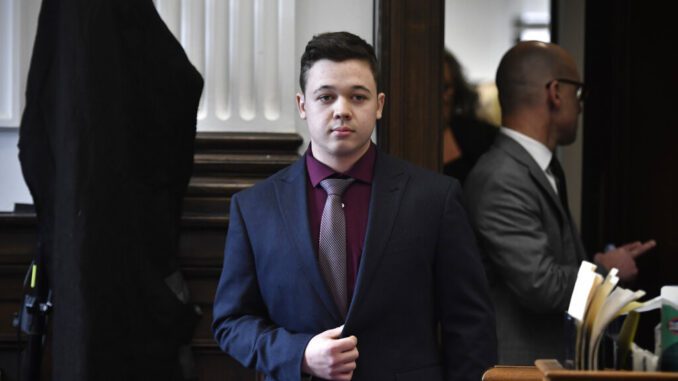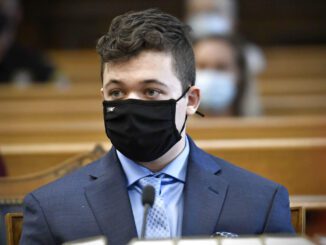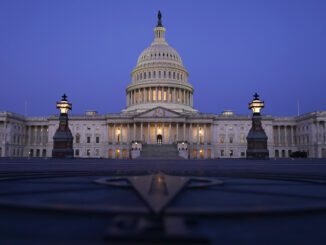
RALEIGH — If 2020 was known as the worst year in recent memory, due to the COVID-19 pandemic, unrest around race and policing, and unusually high political tensions (even for a presidential election year), consider 2021 the slightly more laid-back remix. It had all the same elements but with a bit less intensity. Another way to see it is as the aftermath of 2020, where we saw the conclusion, or at least continuance, of all those major themes of the previous year.
The one major exception to the “less intense” rule happened right after the year began, as a rally in Washington by supporters of former-President Donald Trump, over alleged cheating in the election, turned violent. Thousands of those attending this “Stop the Steal” rally broke into the Capitol to express their frustration with the election results. While many were injured and a lot of property destroyed, nobody was killed and the election was certified hours later, after the people and debris were cleared.
Political tension remained at a slow boil the rest of the year as Joe Biden began his four-year term. Early analysis suggests he has largely disappointed supporters and energized opponents. The catch-phrase “Let’s go Brandon” swept the nation as a euphemism for how Biden critics actually felt, after a reporter misheard a chant of “F*** Joe Biden” at a NASCAR race won by driver Brandon Brown.
Among complaints against the Biden administration are the historically high inflation rate, record drug-overdose deaths, crime waves in major cities, supply-chain disruptions and a chaotic southern border. The political division from 2021, while not spilling into the streets as often as 2020, continued to underlie many of the year’s top stories.
The tensions surrounding race and policing, tightly linked to the overall political divisions, also saw many major stories in 2021. While in 2020, the death of George Floyd and subsequent Black Lives Matter movement led to major protests and riots across the country, this year saw the aftermath of many of those stories.
In April, Derek Chauvin, the Minneapolis police officer who knelt on the neck of Floyd, was found guilty on all three counts, including second-degree murder, in his trial. On Dec. 15, he also pleaded guilty to federal civil-rights violations stemming from the incident.
The three men accused of killing Ahmaud Arbery in February of 2020 were also convicted in 2021. Arbery, a black man, was shot dead after the men attempted a citizen’s arrest with shotguns and trucks in their Georgia neighborhood, where they had suspected Arbery of breaking into homes.
In contrast, Kyle Rittenhouse — who in August of 2020, when he was 17 years old, shot and killed two men and injured another during a Black Lives Matter-related riot in Kenosha, Wisconsin — was found innocent. During the trial, evidence was shown supporting the defense’s case that Rittenhouse was defending himself from people who attacked him, knocked him down and attempted to grab the gun from his hand. The man who survived being shot by Rittenhouse also admitted Rittenhouse only shot him after he pointed his pistol directly at Rittenhouse.
Add to those cases the conviction of black Empire actor Jussie Smollett for orchestrating a hate crime against himself — complete with a noose, Trump hats and bleach — and both sides had some ammunition in the battle over whether racism in America remains a crisis or is being used as a political tool to stoke division.
Another notable trend in the aftermath of the 2020 race-and-policing protests is that many of the left-leaning cities who backed “defunding” police departments in 2020 are quickly backpedaling in 2021, including in epicenters of the movement like Minneapolis, San Francisco and Portland, Oregon. This comes as cities across the U.S. are dealing with smash-and-grab robberies, spiking homicide rates and rampant open-air drug use.
And COVID-19, of course, while hitting America’s shores in early 2020, is still affecting every facet of life in 2021, as it likely will for many years to come. Major COVID-related stories this year often centered around the vaccines, and whether schools, employers and even the federal government had a right to force people to get it.
The vaccine has proven generally effective, both at lowering transmission and in making infections less deadly, but many are choosing not to receive them or do not want their children to be forced to take them in order to go to school. The debate around masking, quarantines and vaccines in schools has led to a revolt by parents across the country, who have shown up at school-board meetings to push back on policies they see as overly cautious and invasive for such a low-risk population.
Biden, in contrast to his earlier stances saying he wouldn’t impose vaccine mandates, is attempting to use his administrative powers to now implement the orders on certain businesses, health-care workers, federal workers and others. However, they have often ended up tied-up in courts or even struck down entirely.
Different variants, like the Delta variant and now the Omicron variant, were also a major source of news coverage. These variants spread much more easily than the original COVID virus, causing panic among many, but symptoms, especially with Omicron, are shown to be much less severe too, so it wasn’t all bad news.
The nation’s COVID stats as we neared the end of the year indicated 73% of the population, or 204 million people, are fully vaccinated, according to the CDC. Among those 65 and older, the age group most at risk, the percentage rises to 95%. North Carolina is a bit lower than the national average with only 58% being fully vaccinated. In December, America also reached the grim milestone of 800,000 people having died of the virus.
So overall, this year may have been just a bit better than last — which is not saying much — but only because the intensity was turned down just a bit.
We are beyond the 2020 election, and while the year started out with chaos at the Capitol by a few supporters of the losing party, those supporters are now satisfied to chant in stadiums and are poised to peacefully sweep the 2022 midterm elections.
We are beyond the riots and violence in the streets surrounding the race-and-policing stories of 2020, and we are seeing a mixed bag playing out in courts, seeming to vindicate elements of the narratives of both sides.
And we are beyond the initial panic of the first major pandemic in living memory, and we now have vaccines and effective treatments that are bringing down death rates among the infected.
So while 2021 had many of the same themes as 2020, it seemed also like a small step back to normalcy. Here’s to 2022 and what will hopefully be another step in that direction.


